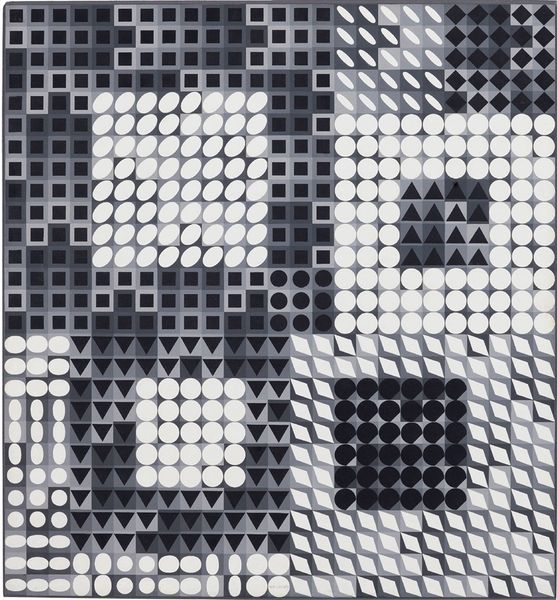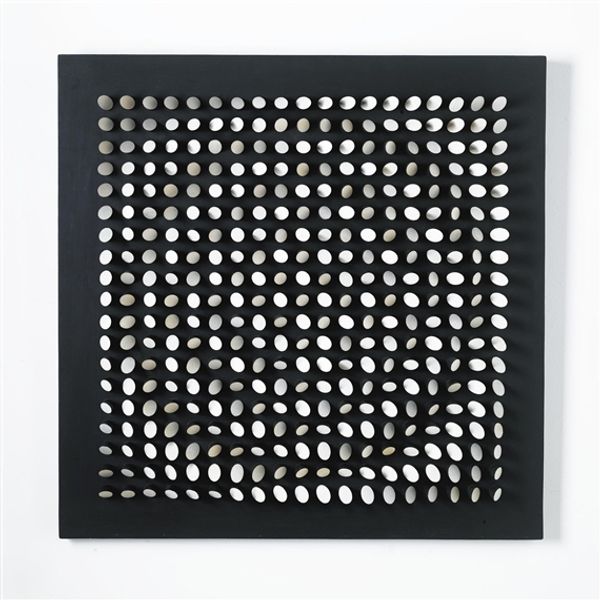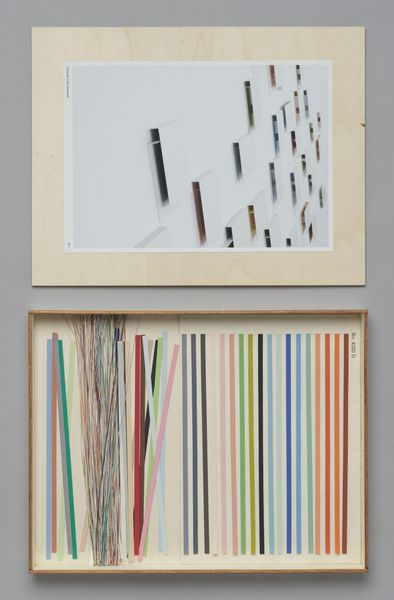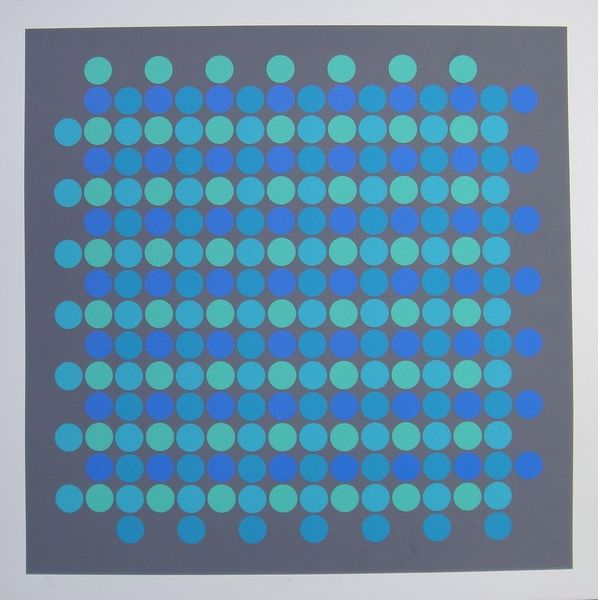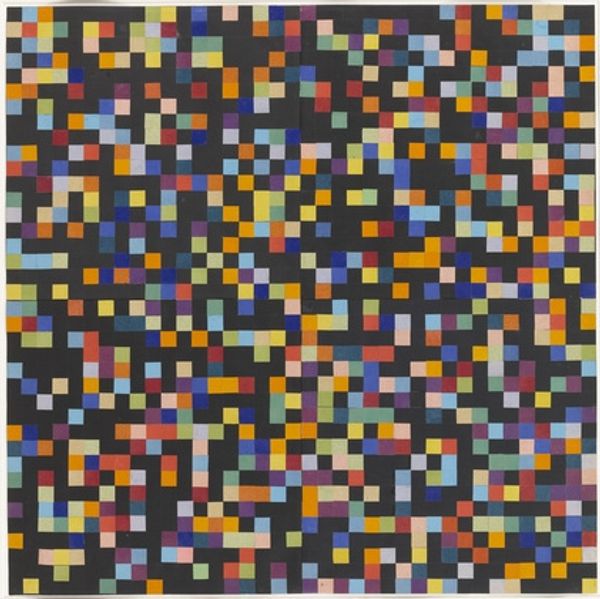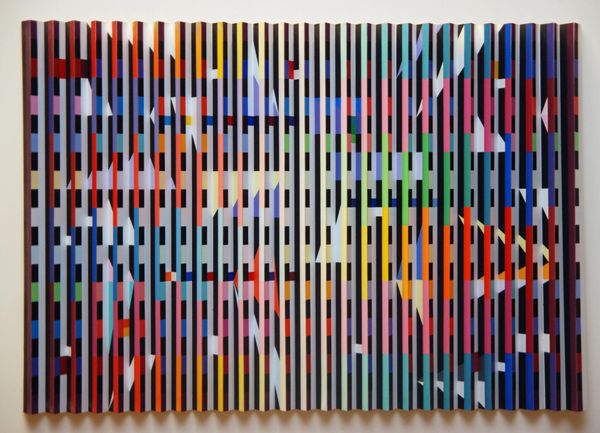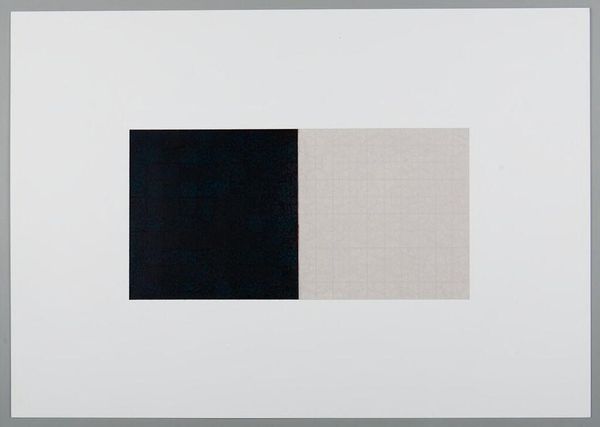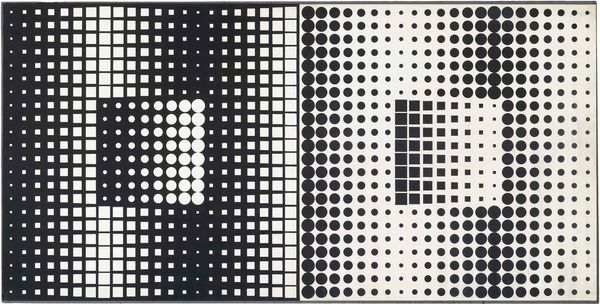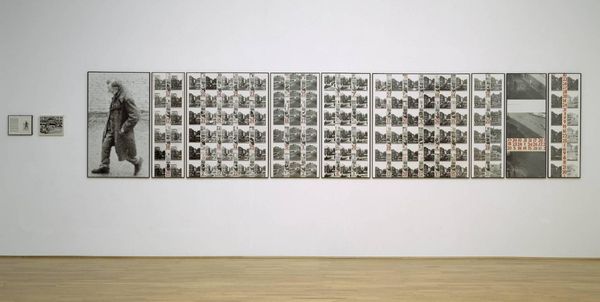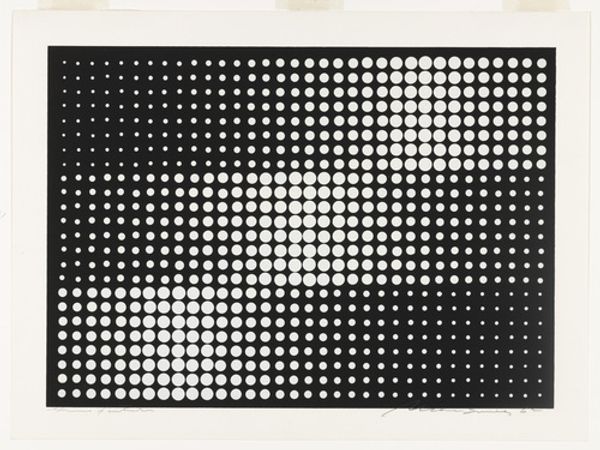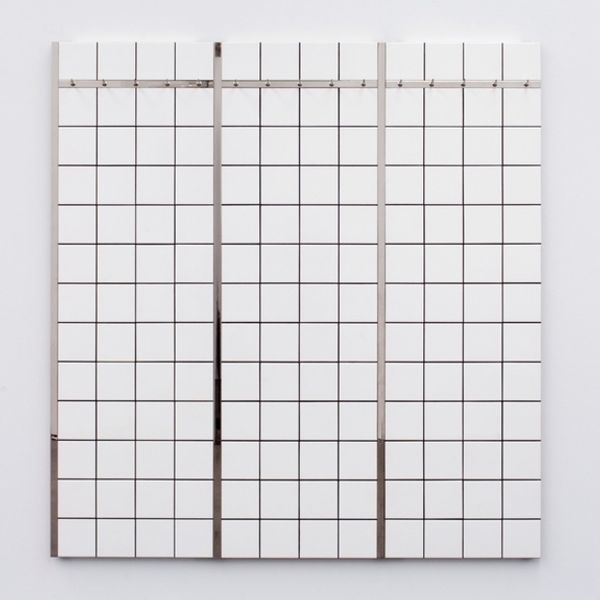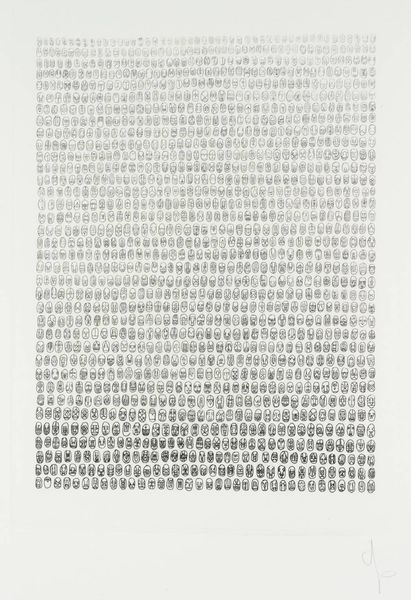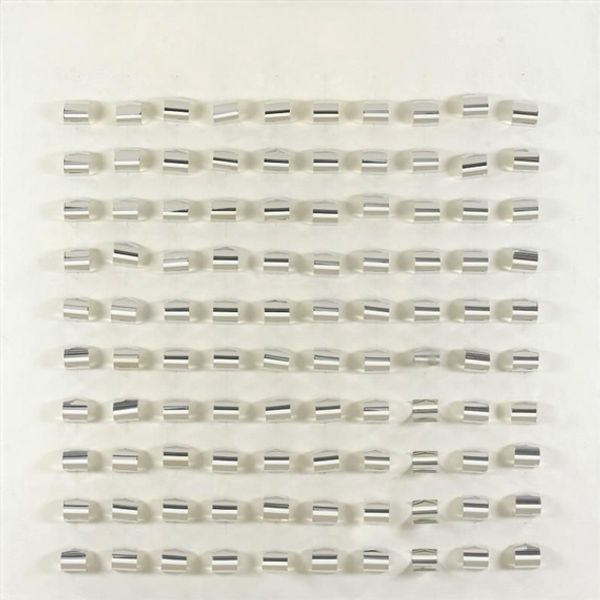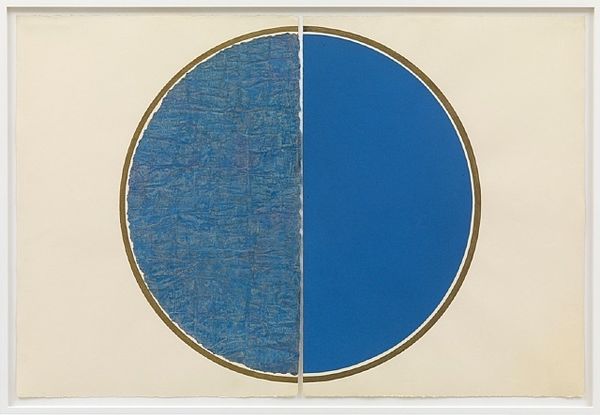
performance, photography, installation-art
performance
pattern used
conceptual-art
text
photography
pattern design
repetitive shape and pattern
installation-art
vertical pattern
regular pattern
pattern repetition
layered pattern
pattern based
combined pattern
pattern work
Copyright: Mierle Laderman Ukeles,Fair Use
Curator: Standing before us is "I Make Maintenance Art One Hour Every Day," created by Mierle Laderman Ukeles in 1976. The piece incorporates photography and installation to address the often-overlooked aspects of daily life. Editor: My initial impression is one of almost overwhelming accumulation. It's like a visual diary exploded onto a single plane, creating this contrasting day-and-night grid. Curator: Precisely. Ukeles highlights what she terms "maintenance" – those mundane tasks of daily upkeep, whether personal or societal. The division between a white background with a yellow sun on the left, and a blue background with stars and a crescent moon on the right— it reinforces the idea of constant cyclical labor. Editor: And that title, presented so directly—almost aggressively. "I Make Maintenance Art One Hour Every Day." It immediately politicizes the private act of cleaning, framing domestic duties as something worthy of artistic consideration. The photos offer visual documentation of these actions. Curator: The grid structure itself—the systematic arrangement of these photographic squares—adds another layer. There's something deeply unsettling in the obsessive dedication evident in documenting this everyday life. The act of making art, then, becomes not about transcendent beauty but relentless routine. We're seeing a profound reflection of structuralism and the repetitive processes of societal maintenance. Editor: It is impossible to detach this piece from the rise of second-wave feminism. It acts as a vital cultural record of the demands and unrecognized labor placed on women at the time. Placing "maintenance" in the traditionally masculine realm of "art," demands that we question the implicit power structures inherent in these spaces. Curator: Agreed. Furthermore, her performances often took place in public spaces. This forced a reevaluation of not only labor but also the function and location of art. This piece makes us reflect on our perceptions and assumptions, as viewers encountering these photographs of ordinary spaces. Editor: And the fact that it is still relevant now, speaks volumes about the institutional failures to truly appreciate this art. Seeing it this way only motivates a deeper sense of inquiry. Curator: Exactly. I come away from this piece considering the beauty and potential for change inherent to everyday actions. Editor: And for me, the power to question everything. From domestic tasks to large scale infrastructure. Ukeles really prompts reconsideration of our perception of the social hierarchies.
Comments
No comments
Be the first to comment and join the conversation on the ultimate creative platform.
